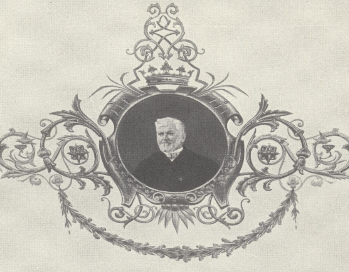Articles/Essays – Volume 11, No. 1
Militant Mormon | Samuel W. Taylor, The Kingdom or Nothing: The Life of John Taylor, Militant Mormon
The publication of two biographies of major figures in Mormon history within a year is no small event. That both Donna Hill’s Joseph Smith (Doubleday, 1977) and Samuel W. Taylor’s Life of John Taylor have issued from national publishing houses confirms once again the proposition that Mormons can write dispassionately about their own history for the commercial market. It was specifically this goal Sam Taylor had in mind when he set out to recreate the life of his grandfather, an apostle and third president of The Church of Jesus Christ of Latter- day Saints. While the book does its share of debunking, dustjacket sensationalizing and humanizing, it retains a warmness, a specialized vocabulary and a particular set of assumptions that infuse it with unmistakable Mormoness.
The John Taylor presented to us through the pages of this carefully crafted book commands a physical and intellectual presence considered by the author to be akin to that of Joseph Smith. A dashingly handsome man who attracts and marries only culturally sensitive and beautiful women, Taylor is typecast as a debonair, English gentleman set against the stereotyped frontier of Brigham Young’s Utah. The author would have us believe that Taylor relaxed the authoritarian rule inherited from Young, and he portrays his grandfather as more comfortable with worldly fare than his immediate predecessor: Taylor as author, scholar and intellectual finds a bond of mutual respect in his encounters with Richard Burton, T. B. H. Stenhouse, William S. Godbe and Edward W. Tullidge and other Mormons who were “liberals and idealists, intellectuals who had chafed under Brigham’s regime.”
Sam Taylor wants his grandfather to live, to be a real person, so he clothes him with human traits: a lifelong liking for black tea, an eye for pretty girls and a conservative skepticism over newfangled inventions such as electric street lighting. The emerging portrait includes other consistent elements: Taylor’s unbending commitment to the Kingdom, particularly to its nineteenth-century marriage system; his dependence upon divine guidance when the going got rough; and his constant concern for wives and family. Sam Taylor molds these facts into a believable whole, a multi-faceted portrait of an admired ancestor.
The book deals with such interesting events as Taylor eluding the federal agents (“skunks”); Brigham Young’s death; George Q. Cannon jumping train to escape the feds; the controversial 1886 polygamy “revelation.” Sam Taylor tries to “set the record straight” or to poke at traditional and strandard historical interpretations. The author’s collaborator and brother, the late Raymond W. Taylor, of Provo, Utah, pursued all avail- able avenues to information. Among the most delightful of his finds was the frank 1849-52 missionary diary of Curtis E. Bol- ton, John Taylor’s companion in France, which offers an inside view of their not always successful proselytizing.
However, readers should be warned that some of Sam Taylor’s speculations deserve careful investigation, especially his resurrection of the poisoning theory as the cause of Brigham Young’s death. Informed historians find no foundation whatever to this, and they use as part of their evidence the diaries of attending physician Seymour B. Young. Sam Taylor is first of all a writer, competent at his craft and experienced in scenario. Readers of The Kingdom or Nothing should not expect methodically footnoted and historically reliable biography. This book is skillfully staged, and the scenes are molded with commendable skill without precise attention to historical context. The result is true-to-life, but fictionalized his- tory. His technique is that of the novelist. Traditional Mormon sources, family folk- lore, non-Mormon writings, unpublished documents and journalistic reports all pro- vide fodder for Sam Taylor’s dramatization. Dialogue, characterization, and conflict are woven into scenes that the reader can readily visualize. The- tension builds and wanes with each confrontation: the overplayed strain of the Taylor and Young personalities at odds; the comic seriousness of a cops- and-robbers game of hide-and-seek on the “underground”; the counterpoint of Gentile prostitution set against Mormon polygamy. Literary techniques bring events within Taylor’s consciousness, causing the subject of this study to stand forth as an aware, thinking, active character on the stage of Mormon history.
The Kingdom or Nothing is less adulatory than the B. H. Roberts portrait of John Taylor written in 1892, yet it is still laudatory. More readable than most family his- tory it is also more entertaining, but it is less dependable than the work of traditional biographers. This book will inform non- Mormons without offending them and it will probably dismay and delight the Latter- day Saints.
The Kingdom or Nothing: The Life of John Taylor, Militant Mormon. By Samuel W. Taylor. New York: Macmillan Publishing Co., Inc., and London: Collier Macmillan Publishers, 1976, 406 pp. $15.00.


 Back to full Issue
Back to full Issue

